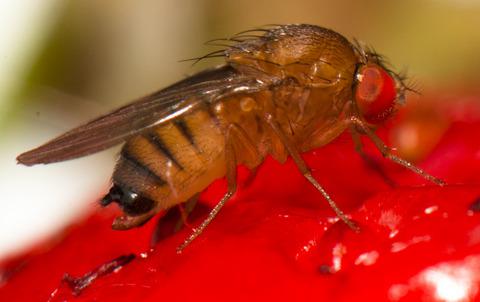当前位置:
X-MOL 学术
›
Funct. Ecol.
›
论文详情
Our official English website, www.x-mol.net, welcomes your
feedback! (Note: you will need to create a separate account there.)
Biological Invasion: The Influence of the Hidden Side of the (Epi)Genome
Functional Ecology ( IF 4.6 ) Pub Date : 2019-03-12 , DOI: 10.1111/1365-2435.13317 Pierre Marin 1 , Julien Genitoni 2, 3 , Dominique Barloy 2 , Stéphane Maury 3 , Patricia Gibert 1 , Cameron K. Ghalambor 4 , Cristina Vieira 1
Functional Ecology ( IF 4.6 ) Pub Date : 2019-03-12 , DOI: 10.1111/1365-2435.13317 Pierre Marin 1 , Julien Genitoni 2, 3 , Dominique Barloy 2 , Stéphane Maury 3 , Patricia Gibert 1 , Cameron K. Ghalambor 4 , Cristina Vieira 1
Affiliation

|
Understanding the mechanisms underlying biological invasions and rapid adaptation to global change remains a fundamental challenge, particularly in small populations lacking in genetic variation. Two understudied mechanisms that could facilitate adaptive evolution and adaptive plasticity are the increased genetic variation due to transposable elements (TEs), and associated or independent modification of gene expression through epigenetic changes. Here, we focus on the potential role of these genetic and non‐genetic mechanisms for facilitating invasion success. Because novel or stressful environments are known to induce both epigenetic changes and TE activity, these mechanisms may play an underappreciated role in generating phenotypic and genetic variation for selection to act on. We review how these mechanisms operate, the evidence for how they respond to novel or stressful environments, and how these mechanisms can contribute to the success of biological invasions by facilitating adaptive evolution and phenotypic plasticity. Because genetic and phenotypic variations due to TEs and epigenetic changes are often well regulated or “hidden” in the native environment, the independent and combined contribution of these mechanisms may only become important when populations colonize novel environments. A focus on the mechanisms that generate and control the expression of this variation in new environments may provide insights into biological invasions that would otherwise not be obvious. Global changes and human activities impact on ecosystems and allow new opportunities for biological invasions. Invasive species succeed by adapting rapidly to new environments. The degree to which rapid responses to environmental change could be mediated by the epigenome—the regulatory system that integrates how environmental and genomic variation jointly shape phenotypic variation—requires greater attention if we want to understand the mechanisms by which populations successfully colonize and adapt to new environments. A free Plain Language Summary can be found within the Supporting Information of this article.
中文翻译:

生物入侵:(Epi)基因组隐藏面的影响
了解生物入侵和快速适应全球变化的潜在机制仍然是一项基本挑战,特别是在缺乏遗传变异的小种群中。两种可能促进适应性进化和适应性可塑性的未研究机制是由于转座因子 (TE) 引起的遗传变异增加,以及通过表观遗传变化对基因表达的相关或独立修饰。在这里,我们关注这些遗传和非遗传机制在促进入侵成功方面的潜在作用。由于已知新的或有压力的环境会诱导表观遗传变化和 TE 活动,因此这些机制可能在产生表型和遗传变异以供选择作用方面发挥了未被充分认识的作用。我们回顾这些机制是如何运作的,它们如何应对新的或压力环境的证据,以及这些机制如何通过促进适应性进化和表型可塑性来促进生物入侵的成功。由于 TE 和表观遗传变化引起的遗传和表型变异通常在天然环境中得到很好的调节或“隐藏”,因此这些机制的独立和综合贡献可能只有在种群定居新环境时才变得重要。关注在新环境中产生和控制这种变异表达的机制可能会提供对生物入侵的见解,否则这些入侵是不明显的。全球变化和人类活动对生态系统产生影响,并为生物入侵提供了新的机会。入侵物种通过快速适应新环境而取得成功。如果我们想了解种群成功殖民和适应新环境的机制,表观基因组(整合环境和基因组变异如何共同塑造表型变异的调节系统)可以介导对环境变化的快速反应的程度。环境。可以在本文的支持信息中找到免费的普通语言摘要。
更新日期:2019-03-12
中文翻译:

生物入侵:(Epi)基因组隐藏面的影响
了解生物入侵和快速适应全球变化的潜在机制仍然是一项基本挑战,特别是在缺乏遗传变异的小种群中。两种可能促进适应性进化和适应性可塑性的未研究机制是由于转座因子 (TE) 引起的遗传变异增加,以及通过表观遗传变化对基因表达的相关或独立修饰。在这里,我们关注这些遗传和非遗传机制在促进入侵成功方面的潜在作用。由于已知新的或有压力的环境会诱导表观遗传变化和 TE 活动,因此这些机制可能在产生表型和遗传变异以供选择作用方面发挥了未被充分认识的作用。我们回顾这些机制是如何运作的,它们如何应对新的或压力环境的证据,以及这些机制如何通过促进适应性进化和表型可塑性来促进生物入侵的成功。由于 TE 和表观遗传变化引起的遗传和表型变异通常在天然环境中得到很好的调节或“隐藏”,因此这些机制的独立和综合贡献可能只有在种群定居新环境时才变得重要。关注在新环境中产生和控制这种变异表达的机制可能会提供对生物入侵的见解,否则这些入侵是不明显的。全球变化和人类活动对生态系统产生影响,并为生物入侵提供了新的机会。入侵物种通过快速适应新环境而取得成功。如果我们想了解种群成功殖民和适应新环境的机制,表观基因组(整合环境和基因组变异如何共同塑造表型变异的调节系统)可以介导对环境变化的快速反应的程度。环境。可以在本文的支持信息中找到免费的普通语言摘要。











































 京公网安备 11010802027423号
京公网安备 11010802027423号